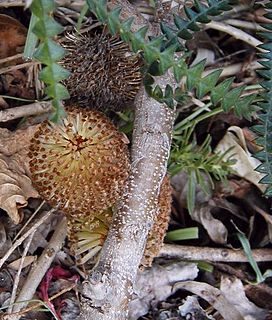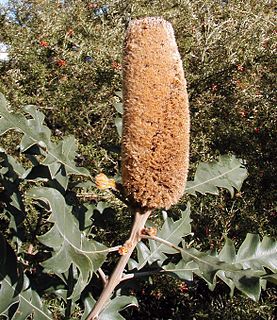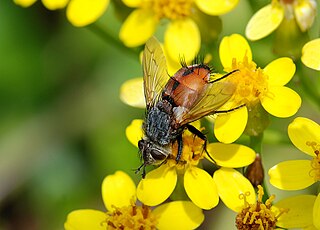
The sap beetles, also known as Nitidulidae, are a family of beetles.

The chachalacas, guans and curassows are birds in the family Cracidae. These are species of tropical and subtropical Central and South America. The range of one species, the plain chachalaca, just reaches southernmost parts of Texas in the United States. Two species, the Trinidad piping guan and the rufous-vented chachalaca occur on the islands of Trinidad and Tobago respectively.

John Edward Gray, FRS was a British zoologist. He was the elder brother of zoologist George Robert Gray and son of the pharmacologist and botanist Samuel Frederick Gray (1766–1828). The standard author abbreviation J.E.Gray is used to indicate this person as the author when citing a botanical name. The same is used for a zoological name.

Thomas Say was an American entomologist, conchologist, and herpetologist. His definitive studies of insects and shells, numerous contributions to scientific journals, and scientific expeditions to Florida, Georgia, the Rocky Mountains, Mexico, and elsewhere made him an internationally known naturalist. Say has been called the father of American descriptive entomology and American conchology. He served as librarian for the Academy of Natural Sciences of Philadelphia, curator at the American Philosophical Society, and professor of natural history at the University of Pennsylvania.

The Drosophilidae are a diverse, cosmopolitan family of flies, which includes fruit flies. Another unrelated family of flies, Tephritidae, also includes species known as "small fruit flies". The best known species of the Drosophilidae is Drosophila melanogaster, within the genus Drosophila, and this species is used extensively for studies concerning genetics, development, physiology, ecology and behaviour. This fruit fly is mostly composed of post-mitotic cells, has a very short lifespan, and shows gradual aging. As in other species, temperature influences the life history of the animal. Several genes have been identified that can be manipulated to extend the lifespan of these insects. Additionally, Drosophila subobscura, also within the genus Drosophila, has been reputed as a model organism for evolutionary-biological studies.

André Jean Baptiste Robineau-Desvoidy was a French physician and entomologist specialising in the study of Diptera (flies) and to some extent of the Coleoptera (beetles).

The Anthomyiidae are a large and diverse family of Muscoidea flies. Most look rather like small houseflies, but are commonly drab grey. The genus Anthomyia, in contrast, is generally conspicuously patterned in black-and-white or black-and-silvery-grey. Most are difficult to identify, apart from a few groups such as the kelp flies that are conspicuous on beaches.

Banksia baxteri, commonly known as Baxter's banksia or bird's nest banksia, is a species of shrub that is endemic to Western Australia. It has greyish brown bark, hairy stems, deeply serrated leaves with triangular lobes and lemon-yellow flowers in an oval flower spike that grows on the end of branches.

Banksia dryandroides, the dryandra-leaved banksia, is a species of small shrub in the plant genus Banksia. The Noongar peoples know the tree as manyat. It occurs in shrubland, woodland and kwongan on the south coast of Western Australia between Narrikup and Beaufort Inlet. The species is placed alone in series B. ser. Dryandroideae.

Banksia solandri, commonly known as Stirling Range banksia, is a species of large shrub in the plant genus Banksia. It occurs only within the Stirling Range in southwest Western Australia. Its scientific name honours the botanist Daniel Solander, one of the first collectors of Banksia.

The Chamaemyiidae are a small family of acalyptrate flies with less than 200 species described worldwide. The larvae of these small flies are active and predatory and are often used for biological control of aphids, scale insects, and similar pests. Chamaemyiid fossils are poorly represented in amber deposits, but a few examples are known from the Eocene epoch onwards.

Odiniidae is a small family of flies. There are only 58 described species but there are representatives in all the major biogeographic realms.

Dryandra subg. Hemiclidia is an obsolete plant taxon that encompassed material that is now included in Banksia. Published at genus rank as Hemiclidia by Robert Brown in 1830, it was set aside by George Bentham in 1870, but reinstated at subgenus rank by Alex George in 1996. In 2007, all Dryandra species were transferred into Banksia at series rank, and the infrageneric Dryandra taxa, including D. subg. Hemiclidia, were set aside.

Melyridae are a family of beetles of the superfamily Cleroidea.

Tachina is a genus of large flies in the family Tachinidae. There are approximately 600 species worldwide. Most have larvae that are parasitoids of Lepidopteran caterpillars.

Stephen Elliott was an American legislator, banker, educator, and botanist who is today remembered for having written one of the most important works in American botany, A Sketch of the Botany of South-Carolina and Georgia. The plant genus Elliottia is named after him.

Tachininae is a subfamily of flies in the family Tachinidae.
Eutheia is a genus of beetles belonging to the family Staphylinidae.
Oxypoda is a genus of beetles belonging to the family Staphylinidae.
















